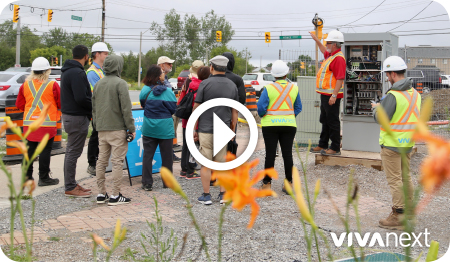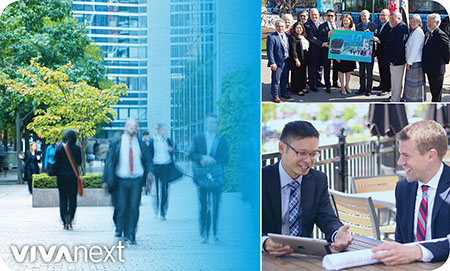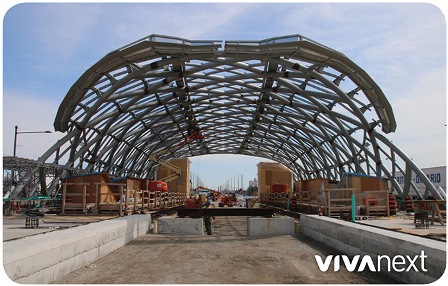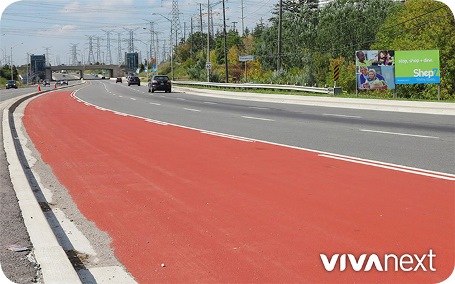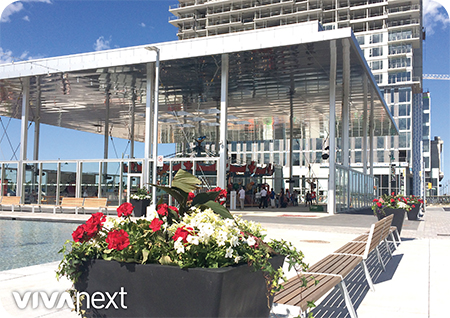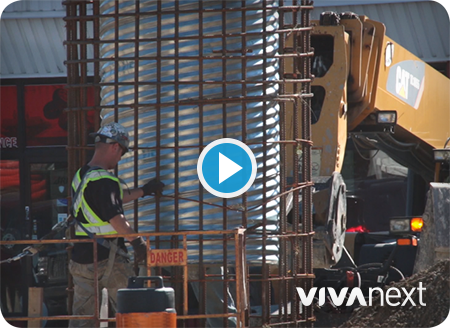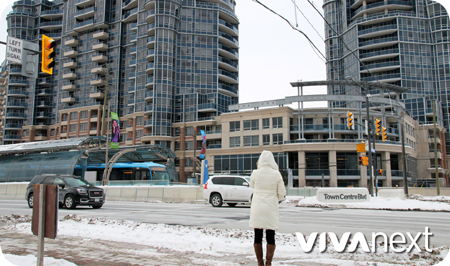This summer, vivaNext offered the public a complimentary behind-the-scenes construction tour in Richmond Hill and it was a resounding success! You can view our latest video on the Yonge Street tours.
Participants got a closer look at the progress of the vivaNext rapidway construction project in various locations on Yonge Street in Richmond Hill – between Highway 7 and 19th Avenue/Gamble Road – and highlighted the following:
- The history of vivaNext
- The steps in building a rapidway
- How traffic signals function with a look inside a traffic controller cabinet
- Environmental mitigation strategies such as tree protection and planting
- The importance of supporting Yonge Street businesses during construction
Local residents who participated in the tour were enthusiastic!
According to participant Marjorie Ball, “gathering a better understanding of the complexity of the project was very helpful. It was well worth the time and a lot of good information came from the staff and personnel on site.”
At the end of the tour, each participant received a $15 lunch voucher to use at participating Yonge Street restaurants and these businesses were more than happy to be involved in this great initiative.
“The question and answer part [of the tour] was fantastic!” said participant George Blundell. “The tour was very interesting and informative and involved a well-rounded selection of employees, including community liaisons, summer students, constructors and engineers. Then getting the lunch voucher was just icing on the cake.”
We want to thank all participants, supporting businesses and our staff for making these tours a success. We couldn’t have done it without you!
For information about ongoing vivaNext projects, be sure to subscribe to email updates, and follow us on Twitter. You can also follow us on Instagram, YouTube and Facebook. Questions or comments? Comment below or email us at contactus@vivanext.com.

